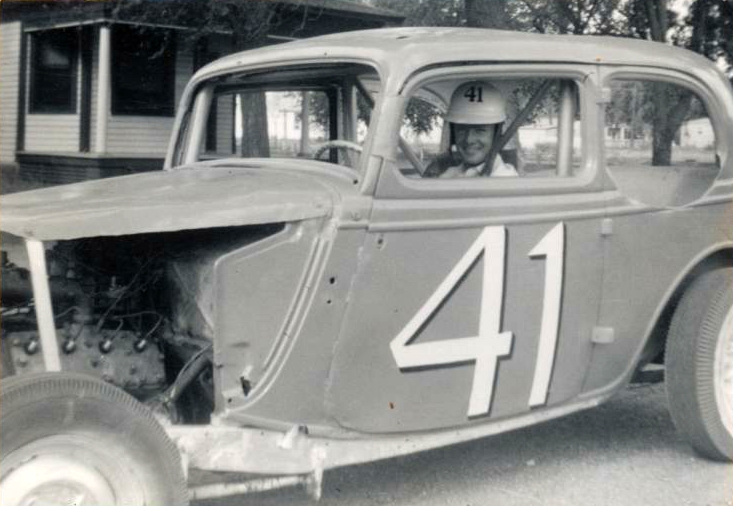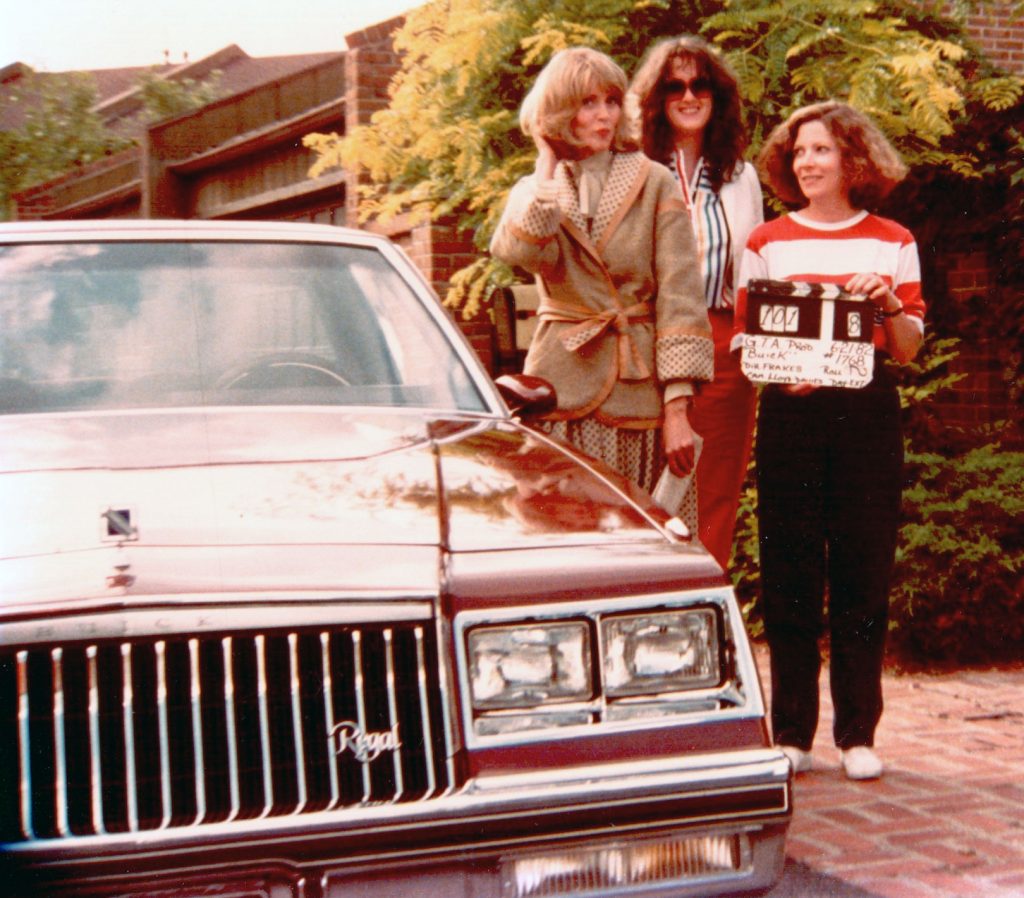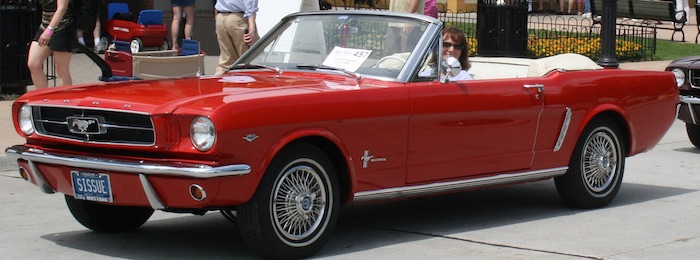Over the past 10 years, beginning soon after I entered graduate school, I have spent most summers in the field talking to women about their cars. Whether it was classic Thunderbirds, sporty chick cars, rumbling muscle cars, or utilitarian pickup trucks, summer – with its preponderance of car shows and automotive events – provided a multitude of research opportunities. However, the COVID summer of 2020 put a sudden stop to such activities. And while car shows are slowly picking up in 2021, there are family issues which will cause me to stay close to home this summer. These turns of events will keep me from embarking on my anticipated project – women and Jeeps – for another year.
The lack of ethnographic opportunities, however, led me to consider other types of women-and-car research projects. A few years ago I had presented a paper on women and cars in film at the Popular Culture Association [PCA] conference. As I had already conducted some of the initial research, the pandemic stay-at-home orders provided an open stretch of time for me to pursue the project. Prior to COVID, I had been asked to contribute a chapter on women and motorsports for an upcoming book. I had attended a Motorsports Conference in Watkins Glen in November 2019 and conducted a little research at the IMRRC [International Motor Racing Research Center] while there; this visit gave me both the material and the impetus to tackle the chapter. And after helping an individual with some advertising questions posted to the Society of Automotive Historians, I was approached by the Automotive History Review – the official journal of the SAH – to write an article about my experiences working at a Detroit automotive advertising agency during the 1980s. Suddenly, after wondering how I was going to spend months of lockdown, I had plenty of research projects to keep me motivated and busy.

In ‘What Would Miss Daisy Drive? The Road Trip Film, the Automobile, and the Woman Behind the Wheel’, I look at 10 post Thelma and Louise films to examine the relationship between a female protagonist and her automobile. As I noted in the PCA presentation:
Since women first expressed interest in automobility, auto manufacturers and marketers have directed the female motorist toward the practical ‘family’ vehicle. While men are encouraged to purchase automobiles that reflect power, performance, and toughness, women are expected to drive a safe, reliable, and functional automobile that reinforces the gender appropriate role of wife and mother. Throughout the nearly 100 years since the first automobile rolled off Henry Ford’s assembly line, advertisers and automakers have consistently and determinedly placed the woman driver behind the wheel of a station wagon, minivan, small SUV, or crossover.
Although modern day advertising continues to reflect this longstanding trend, there is one location that occasionally disrupts this pervasive representation. In the female road trip film, the protagonist is likely to drive a vehicle rarely associated with the woman driver. While traditionally presented as a passenger, sidekick, or not at all in the classic male road narrative, when women take the wheel on the silver screen, the cars they drive take on important supporting roles. Whether a classic car, utilitarian vehicle, convertible, luxury sedan or clunker, these cinematic vehicles are significant not only for the meanings they convey, but also for their ability to challenge common woman driver stereotypes.
The films selected were Grandma, Anywhere But Here, Tammy, Boys on the Side, Tumbleweeds, Cloudburst, Camilla, Bonneville, Manny and Lo, and Leaving Normal. In each of these motion pictures, the type of car – classic, luxury, convertible, utilitarian, clunker, and family – was not just a prop, but rather, was integral to the story and the woman who drove it. As I note in the abstract, “Focusing on the car rather than the journey, the paper reassesses the role and significance of the automobile in film; examines how the woman’s car in film has the ability to disrupt both the dominant road trip and cultural narratives; and broadens the notion of women’s car use to include considerations of identity, agency, reinvention, friendship, family, and empowerment.’ The paper was submitted, returned for revision and resubmission, and accepted for publication in The Journal of Popular Culture.

In ‘From Powder Puff to W Series: The Evolution of Women-Only Racing’ I embarked on new territory. The only guideline for this project was to write on the history and politics of women in motorsport, a rather broad topic. I chose to focus specifically on the history of women’s only racing in an attempt to address the long standing question of whether women are best served by separate or equal opportunities. When I started the project, I was not familiar with motorsports in general, and other than a few famous names – Janet Guthrie, Lyn St James, and Danica Patrick – had little knowledge of the women who participated in it. However, by the time I completed the project, I had a better understanding of the obstacles and challenges women experience when competing in an historically associated with masculinity and the male driver. As I write in the abstract:
Throughout its storied history, motorsports has been unwelcoming to women. Consequently, it has been necessary for female racers to develop unique strategies to enter what has long existed as an exclusive masculine enclave. While entry can be facilitated through a familial relationship with a male driver, women without such connections often get their start through participation in women-only racing events. Although these races – e.g. Powder Puff, Formula Woman, and W Series – have provided women with the opportunity to enter the track, they have not been without controversy. Detractors argue that women will not be considered legitimate racers unless they compete on the same track as men. Proponents view women-only racing not only as a way to attract more women into the sport, but also as an important source of skill development, support, and community building.
This paper investigates the evolution of women-only racing, from its early introduction as a media stunt, to its current incarnation as a proving ground for serious female open wheel racers. Informed by historical documents, news articles, and personal accounts, it considers how women-only racing complicates, facilitates, and liberates women’s entry, participation, and recognition in the masculine world of motorsports.
The completed chapter was submitted, returned for revisions, then sent off to the publisher. Lives in the Fast Lane: Essays on the History and Politics of Motor Racing will be published in 2022.

The last project was perhaps the most fun, as everyone loves writing about themselves. ‘McCann & Me: One Woman’s Experience in Detroit Automotive Advertising’ is a recollection of the three years I spent working in the car advertising business 35 years ago. As I write in the introduction:
Prior to my (very) late entry into academia, I spent nearly two decades in advertising, as an art director, copywriter, creative group supervisor, and eventually a Vice President. A few of those years were spent at McCann-Erickson, one of the many automotive agencies centered in metropolitan Detroit during this time. My career spanned the 1970s and 1980s, a very different era in the advertising world. It was the pre-digital age – computers were not yet commonplace; the Internet was not yet public; photographers still used film; and MTV was in its infancy. This recollection should not be taken as representative of a universal experience; rather, it provides a glimpse into Detroit automotive agency culture during a particular moment in US automotive history.
The article was submitted, returned for revision, and accepted. It will be published in the upcoming issue of the Automotive History Review.
The COVID pandemic resulted in serious disruption in the way we all live. I was fortunate to have been able to put that time to productive use. To have three articles written, revised, and accepted for publication in one year is something of which I am very proud. As I enter my second COVID year, I have begun a new non-ethnographical and fun project. ‘Pink Power: The Barbie Car and Female Automobility’, will be presented at the June 2021 virtual PCA conference.

